Colorado Football Offensive Preview
Do you remember a few years ago when Cal had a number of NFL-bound defensive players, but absolutely nothing going on offense? Yeah, it's kind of like that.
If you follow our weekly Pac-12 power rankings, you might know that (aside from the week after the ugly Cal loss to Wazzu) I have consistently ranked Colorado just below Cal week after week. Colorado coach Karl Dorrell was the Pac-12 Coach of the Year in 2020, after presumed cellar-dweller Colorado turned in an unexpectedly strong season last year, finishing 2nd in the Pac-12 South. It was unexpected because prior one-year coach Mel Tucker pulled a “Lane Kiffin in Tennessee” on them, affirming to players and fans how committed he was to Colorado mere hours before jumping ship to Michigan State. Colorado lost a ton of talent—most notably Jacksonville Jaguars wide receiver Laviska Shenault Jr., who may be on your fantasy football team—and somehow, Karl Dorrell took a team devoid of talent, and beat everyone they faced in the Pac-12 outside of USC.
Under both Tucker and Dorrell, it was clear that Colorado was well-coached on the defensive side of the ball. Colorado had (and still has) a strong defense, loaded with future NFL players (sound familiar?), and did just enough on offense to pull out the victory each game against seemingly “more talented” teams. Dorrell certainly earned his coaching award.
That said, however, Colorado is debuting an exceptionally young team on offense this year. Last year’s starting quarterback, Sam Noyer, transferred to Oregon State (although he was quickly benched for Chance Nolan, who led OSU to the top spot in the Pac-12 North) , leaving the reigns to freshman quarterback Brendon Lewis. In fact, all three quarterbacks on Colorado’s depth chart are freshmen (the others being 3-star QB Drew Carter and unranked walk-on QB Jordan Woolverton). It doesn’t matter if a quarterback is a 3-star recruit or a 5-star recruit, there are always growing pains when you’re breaking in a freshman quarterback.
The unexpected star of the 2020 Colorado offense was [then] freshman running back, Jarek Broussard. Broussard redshirted in 2019 after a season-ending injury in September, but came back in 2020 to become the nation’s Comeback Player of the Year by posting 149 yards/game over 6 games last season. Unfortunately for Colorado, the offensive line has struggled so far in 2021, and the run game has struggled to get going (especially without much of a passing threat either). Consequently, this is an offense that has struggled so far this year. They were able to get it together against Arizona (34-0), but technically FCS Northern Colorado put up more of a fight (35-7). Is this is an offense that can carry that momentum into this week’s matchup with a real FBS opponent? Let’s take a closer look.
Quarterbacks
Freshman dual-threat quarterback Brendon Lewis is leading the Buffs. When I watch games, I don’t have a preset narrative in my mind: I just take clips when I think something noteworthy happens. In Brendon Lewis’ case, all the highlights I have of him were him running the ball. It’s probably not surprising that an athletic quarterback still adjusting to the college game would find more success running the ball. I’ve seen a lot of freshman mistakes from Lewis; locking onto the first read, being fooled by the coverage, etc. Colorado has been spoiled a bit by their past few 4-year/freshman-ready quarterbacks (2013-2016 Sefo Liufau, 2016-2019 Steven Montez, and heck, even 2007-2010 Cody Hawkins), but I have to say that Lewis is no Liufau or Montez, both of whom made an immediate impact. Colorado is currently last in the Pac-12 in both passing offense (125 yards/game) and total offense (260 yards/game). Colorado has not been much of a threat passing the ball, allowing defenses to key in on the run game, and thus Colorado has definitely struggled to move the ball at times.
Let’s start with Brendon Lewis’ strengths. For one, he does a great job of avoiding pressure when the pocket breaks down.
Here Lewis avoids the sack, and manages to find a wide-open RB Alex Fontenot on the busted coverage by Arizona:
Typically, however, when the pocket breaks down, Lewis is looking to run the ball himself. If a team does not properly account for Lewis in the run game, he is certainly capable of running the ball himself for a big gain:
Teams with dual-threat quarterbacks love to run the zone-read, and teams with freshmen quarterbacks usually don’t mind too much when a quarterback risks his health running the ball himself (at least until he becomes an established passing threat). Texas A&M has a solid defense, but Lewis had no problem making plays against them either:
Although I have yet to see Lewis make any difficult throws into tight coverage, he is able to improvise and find open receivers when given enough time. Obviously, it’s important to not let Lewis sit in the pocket all day until he can find an open receiver:
During the Arizona game last week, you could see Lewis’ confidence growing. I can’t remember Lewis ever pulling the trigger on a difficult throw— he is very risk-averse, although I would fathom a guess that this is what he was coached to do— but as Arizona saw the game start slipping away from them (scoop and score TD, pick-6 TD, Arizona offsides for a free play TD), you could see Lewis grow bolder with the score more in his favor. Here, Lewis shows some nice anticipation on the corner route to WR Dimitri Stanley:
The game plan to stop Brendon Lewis is pretty clear: don’t let him escape the pocket, don’t let him get comfortable in the pocket or give him plenty of time to find open receivers, and don’t let him run the ball. Force Lewis to beat Cal through the air.
Running backs
Let me start by saying that Colorado has some very talented running backs, and that the run game is the clear strength of this team. However, Colorado is not running the ball this year anywhere near as well as they were last year. The problem Colorado has been having this season can partially be attributed to opposing teams loading up to stop the run, and partially attributed to a regression in the offensive line play. The offensive line has been noticeably worse, but the personnel isn’t that much different: they lost right tackle Will Sherman to the NFL (6th round, Patriots), moved their old left tackle to right tackle, and are currently starting redshirt freshman Jake Wiley at left tackle.
The offensive line has not been good so far this season. Which is a shame for Colorado, because they have some homerun threats at running back. This season, no Colorado player has a run longer than 35 yards. Their top two rushers: Jarek Broussard, averaging just 51.5 yards/game (down from 149 yards/game in 2020), and Alex Fontenot, managing just 30 yards/game (Fontenot missed 2020 with a hip injury, but averaged 79 yards/game in 2019). Colorado’s third leading rusher is QB Brendon Lewis.
The following is pretty much the only Colorado run game highlight I have of this season. Alex Fontenot gets a good block from the tight end Brady Russell to break off a nice run:
The following running back clips are all from 2020, but I have to include them just to demonstrate what a homerun threat RB Jarek Broussard is. While Fontenot is a midsize RB at 6’0” 205 lbs, Broussard is just 5’9 185 lbs. Although Broussard might be a bit small for a running back, he certainly doesn’t play like it.
When Colorado’s offense was clicking last season, a regular feature was seeing Broussard get a hole at the line, get to the second level of the defense, and just flip the field with a run. Broussard has a ton of speed, and if he can get to the next level of the defense, you’re in trouble. The next few plays are all pretty similar, so I’ll leave the clips without further comment:
Although Broussard seems a bit undersized, I love how “big” he plays. Typically a scatback might be an issue in run protection but not Broussard. Watch Broussard completely level an A&M defender on this blitz pickup:
Here’s another example. 3rd and long, 3 solid Utah defenders in front of the line to gain, and Broussard runs right at them and falls forward for the first down:
Here, Broussard embarrasses a number of much bigger Stanford defenders for another nice run:
It actually seems like Broussard is more apt to rely on power in the run game than the shiftiness you’d usually expect from a running back of his size:
Jarek Broussard was one of the most electric running backs in the Pac-12 last year. Let’s hope Cal can keep that lightning trapped in the bottle where it belongs.
Receivers
Colorado has an extremely young group of wide receivers. There’s the reliable junior Daniel Arias, redshirt sophomore Dimitri Stanley (an athletic receiver who is typically the option on the jet sweep), and… a whole lot of freshmen. Every wide receiver on the depth chart besides Arias and Stanley are freshmen. Behind Arias at WR-X are freshmen La’Vontae Shenault (the talented brother of Laviska Shenault, but who has been suspended for unspecified reasons for an indeterminate amount of time) and Ty Robinson. At the slot behind Stanley is freshman Chase Penry. At the WR-Z are all freshmen: Brenden Rice (more on him in a moment), Montana Lemonious-Craig (one of the coolest names in CFB), and sometimes also Chase Penry. Because there are so many freshmen and a relatively weak passing game, you might think it would be hard to find wide receiver highlights.
Well, that’s where Brenden Rice comes in. Freshman Brenden Rice is the son of legendary NFL Hall of Fame receiver Jerry Rice. Although there have been a number of NFL progeny that have failed to live up to the super high expectations fans place on them because of their name—remember Joe Montana’s son, Nick Montana, quarterbacking for the University of Washington? No? That’s because he was buried on the depth chart and ended up transferring to Tulane, where he ended up losing the starting job there is senior year too—so far, Rice has been living up to the expectations. Rice is easily their most talented receiver: he’s obviously extremely athletic, he plays physical, and he has impressive speed.
Here Rice catches a pass on a simple bubble screen and just blows past a stout Utah defense:
Rice easily blows past the Arizona corner who’s not respecting his speed:

Rice shows nice body control in making the contested catch over the top of the defensive back:
Jerry Rice wasn’t the fastest receiver, but he was the most productive ever: a big part of that was being able to use his speed in the open field and just knowing where to run against a defense. It will be interesting to see if Brenden Rice can similarly learn to dissect coverages and learn how to attack them, because he certainly has the tools to both get open and to make catches even when he’s not.
I haven’t seen enough of the other wide receivers to comment all that much, but I will note that Chase Penry has been a reliable target so far:
One player who I am surprised hasn’t been a bigger factor in the offense so far this year is the tight end, Brady Russell. Russell has reliable hands as a checkdown target:
But Russell is also the type of player to break off a big play if opposing defenses lose him in coverage (e.g. assume he’s just blocking someone, but then goes out for a pass), including one such play this year against USC. After Brenden Rice, Brady Russell is the next most reliable target out there, and the defense should keep an eye on him.
Conclusion
Opposing defenses have been daring Colorado to throw it deep down the field, and prior to the Arizona game, Colorado rarely had any big plays past 20+ yards. If Colorado can force the defense to respect the pass, it would take pressure off the offensive line, and make it easier to let one of their big-play running backs make something happen. With Colorado’s struggles on the offensive line, particularly at tackle, I think this is the game that Cameron Goode will rack up multiple sacks and TFLs on Colorado. The Cal defensive game plan is probably relatively straight forward: stop the run, contain QB Brendon Lewis and make him uncomfortable in the pocket, and force Lewis to take shots downfield. If Cal can do that (and that’s a very big “if” after what we’ve seen so far this season), I think Cal can finally get back into the win column.
Go Bears.


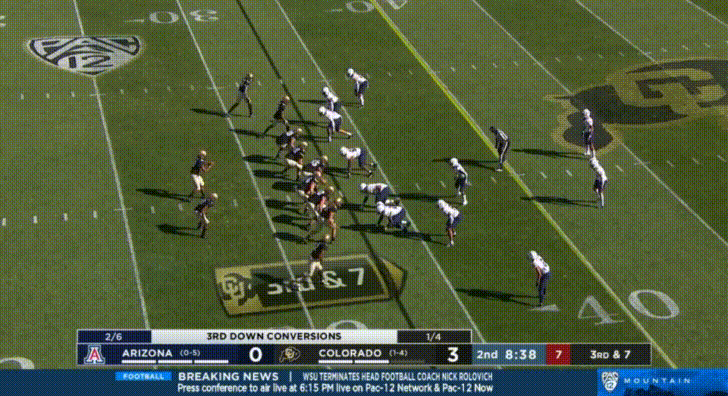
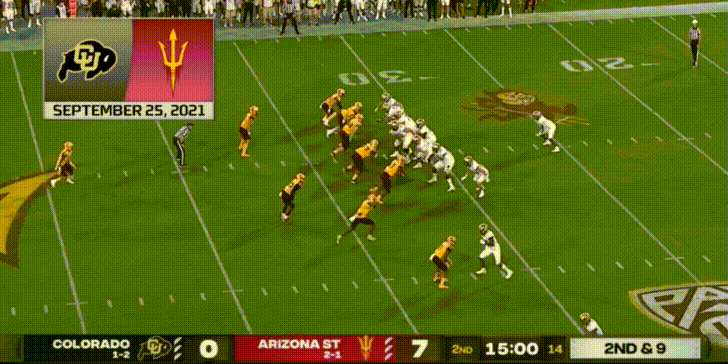
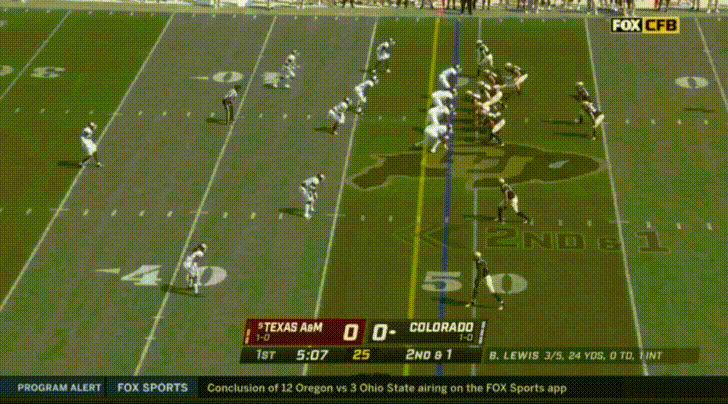
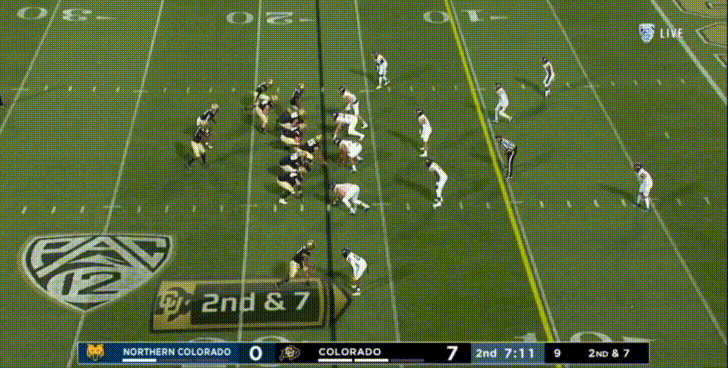

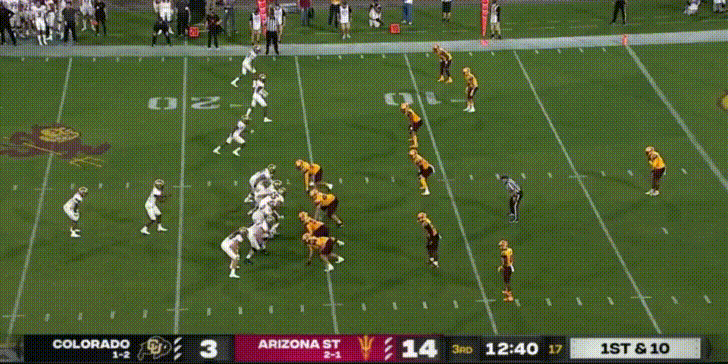
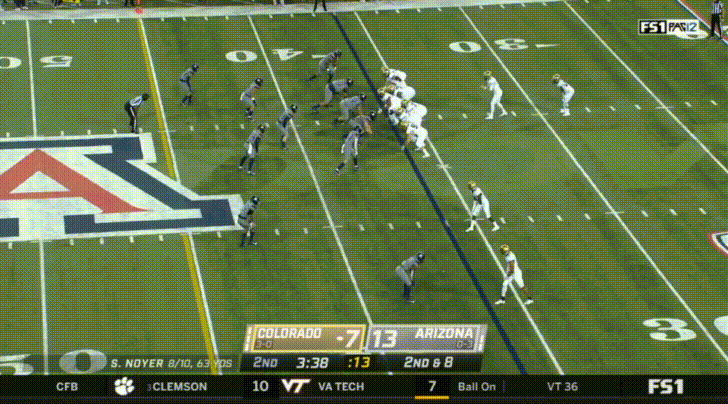

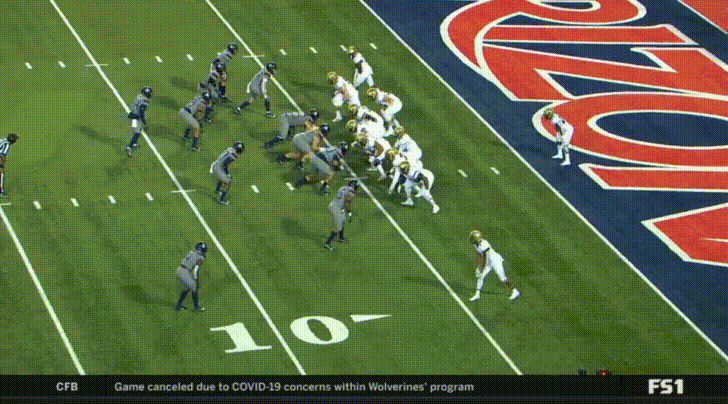
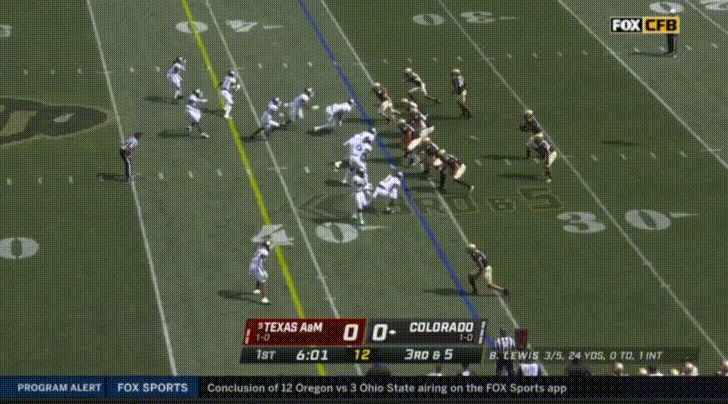
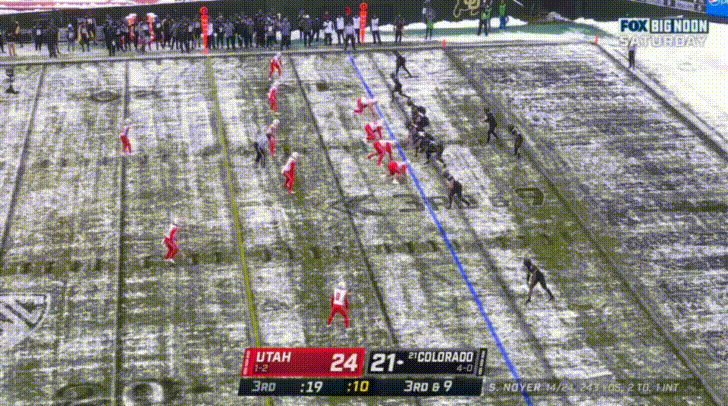
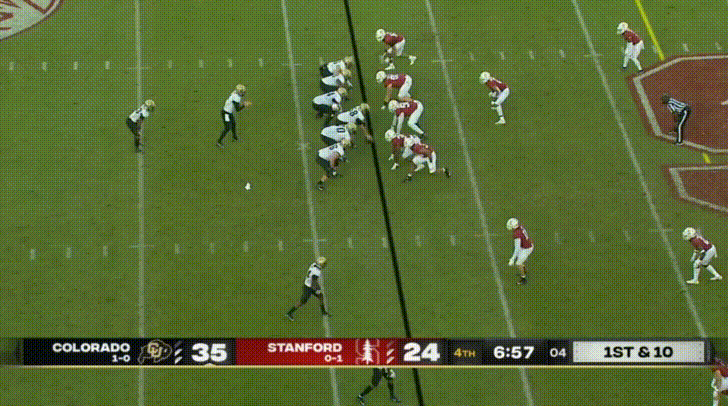
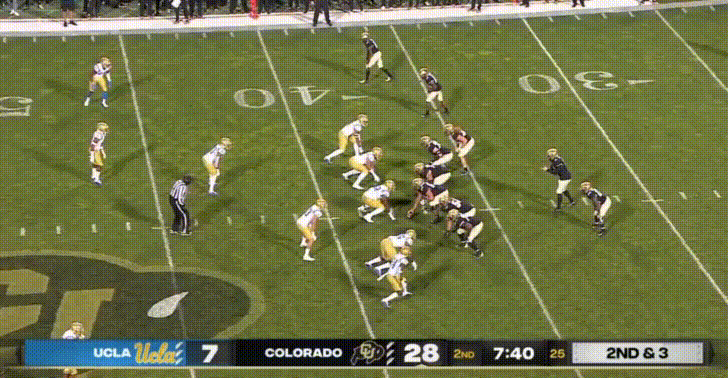

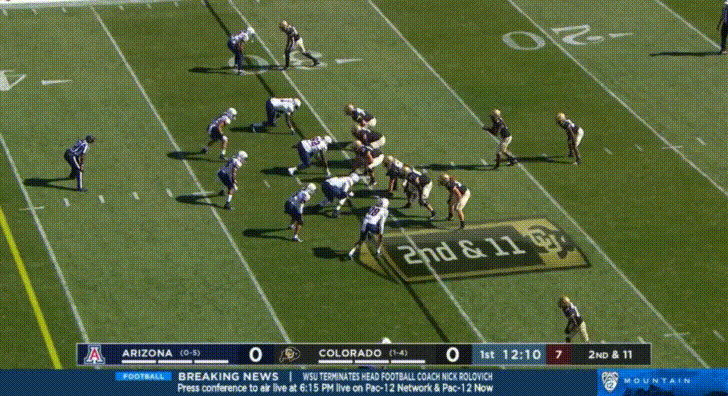
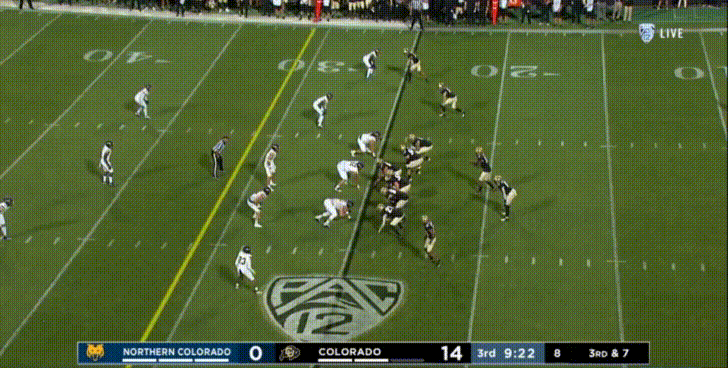
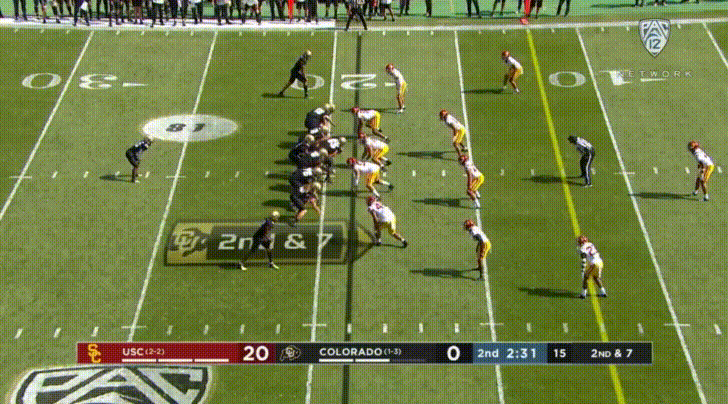
I think our defense should hold. The question is can our offense get past 21 points.
They seem to have some weapons including Rice. If we can contain Lewis and keep them in obvious passing downs we should be OK. Their defense held ATM to only 10 points, so I hope we can score 24+ which will give us a shot at the win.